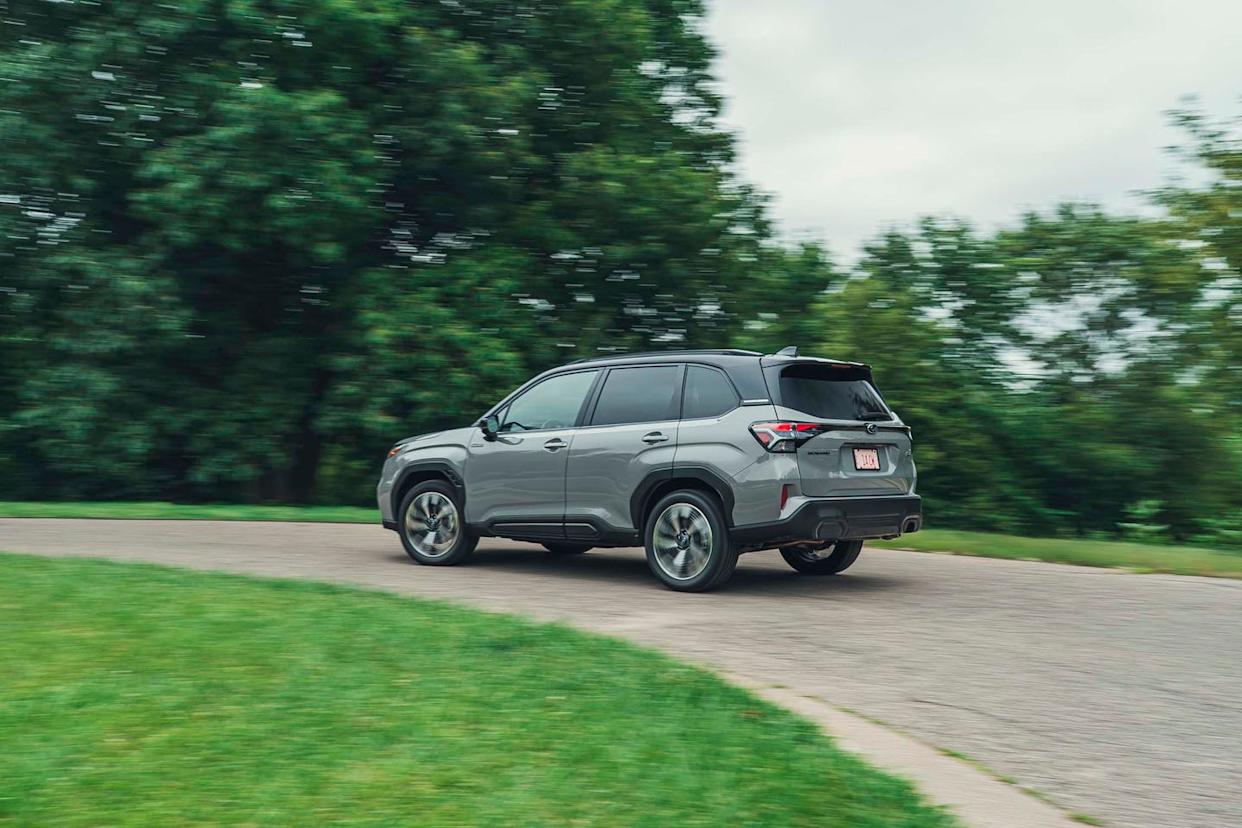The 2025 Subaru Forester Hybrid introduces a significant and welcome transformation, addressing previous criticisms regarding the vehicle’s vitality with an entirely new powertrain that promises far more than a mere power bump. This latest iteration signals a substantial leap forward for the popular SUV, bringing not only improved fuel economy but also a remarkably refined driving experience that sets it apart from its non-hybrid counterpart. Drivers can anticipate a compelling blend of efficiency and performance, redefining expectations for the Forester line.
Under the hood, the Forester Hybrid combines a 2.5-liter boxer engine, retuned to operate on the Atkinson cycle, with a sophisticated electric motor system. While the engine itself contributes 162 horsepower and 154 pound-feet of torque, the primary traction motor, ingeniously concealed within the transmission case, adds a substantial 118 horsepower and 199 pound-feet. This strategic combination yields a robust total output of 194 horsepower, providing a noticeable 14-horsepower advantage over the standard Forester and laying the foundation for its enhanced dynamics.
A critical component of this automotive technology upgrade is the innovative continuously variable transmission (CVT), which departs from Subaru’s traditional Lineartronic design. Utilizing a planetary gearset instead of the conventional pulley-and-chain belt system, this new CVT drastically reduces internal friction and vibration, resulting in a much smoother and more refined operation. An additional motor-generator within the transmission precisely manages engine and traction motor output, generates electricity for the battery, and ensures seamless transitions, albeit without directly contributing to propulsion.
When it comes to real-world performance, the 2025 Forester Hybrid prioritizes smooth, responsive acceleration, particularly from a standstill. Despite an increase in curb weight—our test model weighed 281 pounds more than the non-hybrid—the electric motor’s immediate torque significantly boosts low-speed motivation. While its 8.6-second 0-60 mph time slightly trails the non-hybrid, it excels in urban driving, reaching 20, 30, and 40 mph noticeably quicker. Passing acceleration, especially from 50 to 70 mph, also sees a substantial improvement, underscoring its practical gains.
Beyond raw power, a paramount theme for the new Subaru Forester Hybrid is refinement, particularly in terms of noise suppression. Extensive sound deadening contributes to a remarkably quiet cabin, with a 70-mph cruise test registering a mere 68 decibels, a significant reduction from the non-hybrid’s 70 decibels. The seamless integration of the EV mode, which activates even at highway speeds and during cruising, further enhances the tranquility, making transitions between electric and engine power virtually imperceptible under normal driving conditions.
A notable advantage of the Subaru Forester Hybrid lies in its all-wheel-drive architecture. Unlike some hybrid SUV competitors, such as the Toyota RAV4 Hybrid, where the rear axle might be independently powered by a separate electric motor, the Forester Hybrid’s engine and hybrid system are positioned upstream of the all-wheel-drive transfer case. This ensures that all four wheels are consistently driven by the integrated hybrid powertrain, providing continuous and synchronized all-wheel action, even if it entails a slight fuel efficiency penalty compared to some rivals (35 mpg combined for the Forester versus 39 mpg for the RAV4 Hybrid).
The shift to hybrid propulsion also necessitated other thoughtful engineering adjustments. An electrically powered AC compressor, along with revised brakes, ensures consistent pedal feel during regenerative braking and traditional pad-and-rotor engagement, a testament to Subaru’s attention to detail. The suspension has also been recalibrated to account for the increased weight, maintaining the Forester’s signature planted yet compliant ride. Despite minor changes in stopping distance and skidpad grip, the vehicle retains its confident road manners and impressive ground clearance, offering a secure and composed driving experience.
Interior accommodations remain a strong suit, with impressive visibility and ample space for both front and rear occupants. The front seats provide excellent bolstering, enhancing comfort during spirited drives. Furthermore, Subaru’s EyeSight driver-assist system demonstrates a notable level of sophistication, discerning between intentional maneuvers and genuine inattention. This intelligent design ensures that safety features remain active and useful, avoiding the common frustration that leads drivers to disable less intuitive systems.
Prospective buyers will appreciate the transparent pricing strategy, revealing a more modest premium for the hybrid model than initially anticipated. While the base non-hybrid is significantly less expensive, the entry-level hybrid starts at the Premium trim, narrowing the actual cost difference to a range of approximately $1700 to $2010 for comparable equipment levels. Considering the enhanced fuel efficiency, quieter operation, improved low-speed acceleration, and exclusive digital cockpit display, the return on investment for the Subaru Forester Hybrid could be realized in fewer than five years at average pump prices, making it a compelling choice for many consumers seeking a refined car review experience.






Leave a Reply